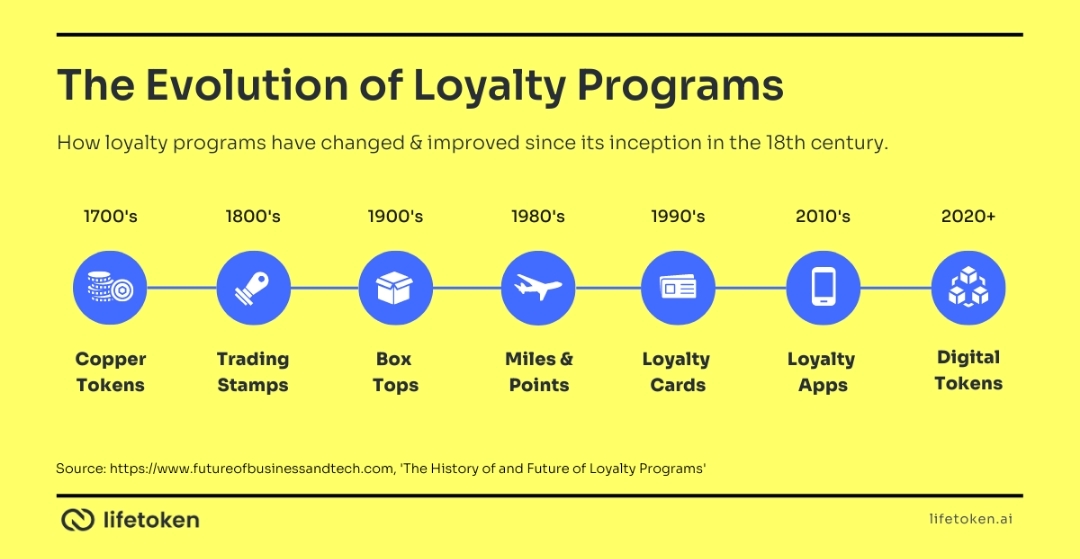Table of Contents
- Introduction to Rewards Programs
- The Importance of Reward Systems in Consumer Retention
- Modern Trends in Loyalty Programs
- Beyond Traditional Points: Innovative Rewards Solutions
- The Job of Gamification in Improving Commitment
- From Points to Payments: A New Era
- Security and Protection Worries in Computerized Prizes Projects
- Integrating Rewards with E-commerce and Online Platforms
- Customer Insights and Analytics in Fine-Tuning Reward Programs
- The Eventual fate of Faithfulness Projects: Expectations and Conceivable outcomes
Key Takeaways
- Loyalty programs have transitioned from shortsighted focuses based frameworks to multi-layered components inserted inside a purchaser’s way of life.
- Innovative headways are making way for devotion programs that are safer, customized, and experientially rich.
- Future unwaveringness projects could use man-made intelligence and other arising innovations to give profoundly altered reward encounters.
Introduction to Rewards Programs
At their core, rewards programs embody a time-honored principle in customer relations: the concept of reciprocity. From paper punch cards to cutting-edge digital platforms, these programs have historically functioned as the gateway to customer loyalty, using the allure of future savings to encourage ongoing patronage. In the contemporary marketplace, amidst a deluge of competing incentives, a well-conceptualized rewards program can serve as a potent differentiator for businesses keen to cement robust relationships with their users.
However, emerging from a crowded market necessitates innovation beyond traditional loyalty frameworks. Modern consumers expect frictionless experiences that transcend mere transactional interactions. Programs like the one represented by the gaming rewards program are a testament to how businesses can branch out into niche markets, providing value and deepening engagement with target demographics. By embracing specialized reward structures, companies can resonate with consumer interests in distinctive and memorable ways.
The Importance of Reward Systems in Consumer Retention
The efficacy of reward systems in establishing and maintaining consumer loyalty is well-documented. They contribute significantly to a strategic framework that drives repeat business and fosters sustainable growth. By unlocking a sequence of benefits through continued engagement, customers are enticed into a cycle of repeated purchase behavior, which is likely to manifest in long-term brand commitment. The psychological underpinnings of feeling valued and recognized through such programs cannot be understated in a market where emotional connections play an increasingly prominent role.
Diving into the numbers enhances this perspective, as detailed by Statista, showcasing a staggering enrollment in loyalty initiatives across the United States. This trend is indicative of programs’ intrinsic value to the American consumer.
Modern Trends in Loyalty Programs
The intersection of technology and consumer behavior has propelled loyalty programs into new territories, punctuated by personalized experiences and digital engagement. Where loyalty once hinged solely on transaction frequency, it now thrives on interaction, personalization, and value alignment, propelling brands to reimagine how they connect with and reward their followers. Consumers now anticipate rewards that recognize not just their spending habits but also their preferences and lifestyle choices.
Advancements such as social media integration and mobile accessibility have further facilitated an environment where loyalty programs are woven into the fabric of daily consumer life. This evolution has led to a paradigm shift, commanding brands to offer tangible value and seamless integration with a customer’s digital footprint.
Beyond Traditional Points: Innovative Rewards Solutions
The innovation brought about by the desire for differentiation has propelled rewards beyond the traditional, straightforward points-per-transaction model. Instead, modern consumers are met with many reward choices that span exclusive experiences, curated gifts, and partnerships, extending the value of each point earned well past the storefront. These paradigms are reshaping the landscape of consumer loyalty as points begin to serve broader, more meaningful purposes within customer ecosystems, such as participating in exclusive events or charitable contributions.
Emerging leagues of savvy consumers are scrutinizing the tangible value their patronage presents more than ever. In response, companies are leveraging the flexibility of rewards points, allowing them to be converted into various forms of currency or credits redeemable across a collaboration network of brands, thereby elevating the overall customer experience and brand affinity.
The Role of Gamification in Enhancing Engagement
One of the most engaging and patterns in unwaveringness programs is the presentation of gamification. By cultivating a pride and contest among clients, gamification implants a powerful component into the obtaining of focuses, making the interaction fun and fulfilling. Through milestones, tiers, and a sense of progression, loyalty programs can engender a stronger bond between brand and consumer, evolving customer engagement from passive collection to an active and enjoyable pursuit.
Achieving this calls for strategic iteration, where companies integrate creative challenges, progress milestones, and immersive activities that reward transactions and foster a sense of community and participation. This approach promises higher customer satisfaction as customers feel more involved and invested in the brand narrative.
From Points to Payments: A New Era
The evolution from accruing points to utilizing them as financial currency represents a paradigm shift in the rewards program domain. Integrating loyalty points within payment processes signals a new chapter predicated upon customer empowerment and fluidity in the consumer-brand relationship. It is a symbiotic progression that benefits both the customer, who enjoys greater freedom and choice, and the business, which fosters increased customer engagement and satisfaction.
This change recognizes the customer’s desire for pragmatism in rewards redemption, allowing points to be used in many settings, including online transactions and third-party services, implying a transformative potential for customer loyalty that extends far beyond traditional retail contexts.
Security and Privacy Concerns in Digital Rewards Programs
While digital rewards programs offer uncommon comfort and proficiency, they additionally raise security and protection concerns. During a time where information breaks are a huge danger, the respectability of client information inside dependability programs can’t be disregarded. Shoppers endow brands with individual data under the reason that it will be defended; this trust should be respected with thorough security conventions and straightforward information rehearses.
Considering this, dedication programs should utilize best practices in information security, like strong encryption and standard reviews; guaranteeing individual information is dealt with absolute attention to detail. Moreover, clear communication regarding data usage policies can be vital in building and maintaining consumer trust.
Integrating Rewards with E-commerce and Online Platforms
The ubiquity of e-commerce has boosted organizations to interlace their dependability programs with web based shopping encounters to drive client faithfulness and deals. Advanced shopping baskets and award frameworks are progressively associated, permitting customers to procure and reclaim focuses as they explore online commercial centers without any problem. This integration has proven to accelerate customer loyalty, ingraining brand rewards into the online shopping experience and infusing the transaction process with added value.
By linking rewards with user profiles and online activities, businesses can glean insights and adjust their offerings, leading to more personalized and targeted marketing strategies. These built-in rewards structures inject loyalty into every step of the e-commerce journey, creating a seamless cycle that rewards customers as they engage with the brand across various digital interfaces.
Customer Insights and Analytics in Fine-Tuning Reward Programs
Big data and analytics are reshaping the landscape of rewards programs. Armed with insights culled from customer interactions, companies can fine-tune loyalty systems to peak efficiency, creating a more resonant and rewarding experience for the consumer. The data derived from reward program interactions is a treasure trove for those seeking to customize offers, predict trends, and build loyalty through personalized experiences.
With the advent of predictive analytics and refined information demonstrating procedures, brands have the ability to expect the cravings and necessities of their reliability program individuals, making a feeling of tailor made help that can significantly elevate client fondness and drive commitment.
The Future of Loyalty Programs: Predictions and Possibilities
As we peer into the horizon of loyalty programs, it becomes clear that the potential for development and change is tremendous. Industry leaders and marketing futurists envision a marketplace where loyalty programs transcend traditional boundaries, become more immersive, and inherently personalized. Integrating technologies like artificial intelligence offers the promise of loyalty programs that learn from customer behavior and anticipate and adapt to evolving consumer needs with stunning accuracy.
In the quest to deepen customer relationships, brands may turn to advanced technological solutions, blurring lines between the digital and physical worlds to create cohesion in consumer experiences, as thought leaders at Harvard Business Review noted. With the ability to micro-target rewards and tailor experiences, the dynamic future of rewards programs is poised to foster unprecedented levels of brand loyalty and engagement.


